| Author | Message | |||||||||||||||||||||||||||
Court |
I always think of the motor that spins the Space Needle in Seattle ....something like 1/2 HP and 35,000 #/' of torque... | |||||||||||||||||||||||||||
Tripper  |
Jay Leno tells a story of melting the front fascia of a car when the cager pulled up too close at a stop light. Of course he drove off as if nothing was wrong. | |||||||||||||||||||||||||||
Brucelee |
In a real world sense, my experience is that you want that tiny 600 CC bike with all that HP at 11K RPM when you can wind your bike out all day long. That can be a rush, but for me, it got tired very quickly. Out goes the Ninja, in comes the Buell. On the other hand, the torque on my XB is there down low and all the time. So, is simply more enjoyable to me for everyday riding. If I were 21 again, maybe not the same feeling. I did have a 1200CC Bandit that was a nice compromise. However, it is a bit heavy for this 160lb guy! | |||||||||||||||||||||||||||
Reepicheep 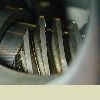 |
Here is a question, what about electric motors? The current draw changes with load, so surely it can't be simply Torque X RPM. But I can't believe RPM is a non issue either. Anybody know? I got a "D" in my machines and power class because I spent too much time on my Unix and C++ work. In hindsight, I made the right call, but I am curious...  | |||||||||||||||||||||||||||
Halffast |
Torque - The moment of a force; the measure of a force's tendency to produce torsion and rotation about an axis, equal to the vector product of the radius vector from the axis of rotation to the point of application of the force and the force vector. Horse Power - A unit of power, used in stating the power required to drive machinery, and in estimating the capabilities of animals or steam engines and other prime movers for doing work. It is the power required for the performance of work at the rate of 33,000 English units of work per minute; hence, it is the power that must be exerted in lifting 33,000 pounds at the rate of one foot per minute, or 550 pounds at the rate of one foot per second, or 55 pounds at the rate of ten feet per second, etc. | |||||||||||||||||||||||||||
Blake |
Bill (Reep), Isn't an electric motor behaving similarly to an internal combustion engine? With an IC engine, doesn't the fuel supply changes with load just like current draw does for an electric motor. The power of any rotating motive device will equal angular force (torque) times angular speed (rpm). In linear terms (not angular aka rotational), power is simply force times velocity. How much HP would a rocket engine with 400LBs peak thrust produce? Anyone? | |||||||||||||||||||||||||||
Hobanbrothers 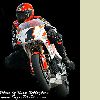 |
I think the root of the issue that Dan talks about is we typically talk of motors in different senses. A torque motor and HP motor. One has a lot of torque, and as Aaron says, it will have more HP at that moment also. That may be at 3,000RPM, now a bike that makes big torque there may be 65 RWHP at that given point. It may even flat line there and stay at or near 65 HP because it has become limited somewhere, be it port limited, cam limited, carb, etc. The one that makes big HP may be at 45 rwhp at that same given point in RPMs. (We had motors set up that way when we raced Sportsters in a 65 HP class. We were pretty proud in those days to turn out a strong 65 out of a 883, now that is no big feet.) Unrestricted some made upwards of 85 RWHP Nobody wants to say that, because other guys/gals will compare that to: My bikes makes 100RWHP and says yours sucks. But... We had a guy come in and said the guy he bought his bike from said it had 100 horse. We put it on our dyno and it was under 80, but nobody could touch him on the street and he swore at me. He did have 105 lbs of torque though at 3,500 Rpm, you just had to shift early because it became limited to turn more RPMs because of a 50 state legal cam. Now on the other hand, you can have a motor set up to make HP at the top and people are impressed by big HP numbers but if you look at Torque (and HP) at a low RPM number, they are typically less, depending on a apples to apples comparison. Hence a HP motor and the funny thing is the HP motor will have the most torque at lets say 7,500 RPM, just as Aaron says. Both do what they are designed to do and there are physical limitations to doing both at times. Our racing in a HP regulated class makes us build a motor that makes big HP (and torque)low and try to sustain as far as possible. Through cams we can add another 15-20 HP on top, but you end up taking away from somewhere else and that ends up hurting you in roadracing and also longevity as you have to turn them higher to get what you bought. If you are comparing dyno charts, compare the entire chart, not just peak numbers and know your riding style. Bottom line is, enjoy what you have, I believe torque low is more fun than HP high and that is what a Buell is all about! | |||||||||||||||||||||||||||
M1combat 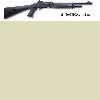 |
"How much HP would a rocket engine with 400LBs peak thrust produce? Anyone?" There's no rotational force (torque) and no revolutions... Is it determined by how long the 400lbs of thrust will last? | |||||||||||||||||||||||||||
Sandblast 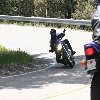 |
I'm curious about that Blake- also, I grew up on horses, and they are a lot stronger than one Horsepower- somebody want to explain that to me?  | |||||||||||||||||||||||||||
Blake |
Shawn (Sandblast), The one HP definition of hoisting 550 LBs, one foot per second was estimated the rate of work that one typical farm work horse could maintain in a sustained effort over the course of an entire work day. Sounds about right to me. Think about it... lifting 550 LBs one foot every second, or 60 feet every minute, all day long...  You are absolutely right though. For peak burst mode, a horse is a lot more powerful than one HP. | |||||||||||||||||||||||||||
Blake |
"There's no rotational force (torque) and no revolutions... Is it determined by how long the 400lbs of thrust will last?" Possibly. Recall that power is the rate at which work is done; in math terms... Where: P=Power And we know that in linear terms (not angular/rotational like with an engine output shaft) work equals force times distance, in math terms... Where: W=Work It's a tough one. Had me wrinkling my brow for a while too.  (Message edited by blake on December 18, 2004) | |||||||||||||||||||||||||||
Sandblast  |
Thank you for putting that to me so simply Blake, it is nice to understand that now. I almost did not want to ask because I thought I should know already, but I am glad I did. (thats one heck of a horse that could work at that level all day, I guess thats why we have motors!). | |||||||||||||||||||||||||||
Evaddave 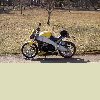 |
Blake, Combining the two formulas you wrote gives P = f * x / t Power is a force times a distance divided by the time. That seems to match up with Mbsween's formula of HP = ft-lbs/sec. You've given us the lbs number, 400, which leaves us with finding the distance and time numbers. Or more specifically, ft/sec, which is velocity. So it looks like the Power output of the jet/rocket engine depends on the speed of said engine. The faster it goes, the more power it makes. That makes some sense, but it also makes me wonder: if the engine makes no power at a standstill, how does it get moving to begin with? | |||||||||||||||||||||||||||
Buells Rule! (Dyna in disguise) 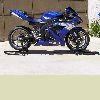 |
I dont recall ever hearing a rocket being mentioned as having hp, only thrust. They dont drive any wheels so I dont even know how it would be calculated. | |||||||||||||||||||||||||||
Jlnance 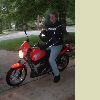 |
Reep, It is that simple, particularly for a DC motor. The math is more complex with an AC motor, but the idea is the same. One thing to keep in mind is that if you multiply RPMs by Torque, you will get a unit of power, but it will not be in Watts. You will have to do some unit conversions to get it to match. I ended up doing Unix and C through a path similar to yours. I was in graduate school in a power electronics program, but ended up writing simulations of rectifier circuits. After a while it was apparent that writing the simulations was much more fun than working on the electroncis. | |||||||||||||||||||||||||||
Jlnance  |
Evaddave - I think thats one of those zero divided by zero problems that inspired the invention of calculus.  | |||||||||||||||||||||||||||
Reepicheep  |
Thanks Jim, that explains a lot about why it seems to contradict logic... it doesn't. | |||||||||||||||||||||||||||
Halffast |
I like the saying "Torque is real, horsepower is just a calculation." | |||||||||||||||||||||||||||
Blake |
EvadDave nailed it. Power does work out to be thrust times velocity. So the HP of a rocket depends upon how fast it is moving relative to whatever reference, usually a point on the Earth, from which you wish to evaluate it. The same is pretty much true for jet engines too, especially turbojet engines. Unless you can measure their shaft torque like for a turbo fan or turboprop or plain ole turbine engine mated to an output shaft that drives a propeler, rotors, gearbox, or whatever, it's tough to rate them in terms of power output (HP). It still messes with my mind. It is not that a rocket has no power unless it is moving; it is that it has not yet transformed it's chemical energy into kinetic energy. It is still putting out a BUNCH of power in the way of heat and kinetic energy imparted to air and exhaust gasses. I tried to make the above as difficult to follow as possible so that I could keep talking about this stuff. I love it.  I love it so much I'm going to keep on blathering away...  Another way to compare the relative power of HP to thrust would be to calculate the peak thrust of our motorcycles at the rear wheel. That will correspond to the peak torque times the overall drive ratio then divided by the radius from the axis of the rear axle to the contact patch. For the sake of simplicity, let's say we have 80 FT*Lbs of torque at the crankshaft referenced to the rear wheel. Side note: What we mean by "referenced to the rear wheel" is that we have accounted for driveline losses since we measure engine performance at the rear wheel then backed into the engine torque based upon engine RPM. In actuality the torque at the crankshaft would be a bit higher due to the parasitic losses of the transmission and final drive. But since we obtained the engine output performance at the rear wheel then simply used the known engine speed (RPM) to derive the engine torque, that number already accounts for all driveline losses. If we were to hook up a dynomometer to the primary drive and measure performance there, we would get around 15% higher numbers. So again, to calculate thrust we have 80 FT*LBs of engine torque referenced at the rear wheel times the overall drive ratio (crank to rear wheel) then divided by the radius from rear axle to contact patch. Using the overall drive ratios for my '97 Cyclone and 80 FT*LBs of engine torque, and with me and the bike together weighing in at around 680 LBs in street mode, the thrust calculations come out as follows...
Hey, if I could somehow find the traction, I could go vertical in first gear.  FYI: I used 12.3" for the radius from rear axle to contact patch. It is an educated rough estimate based upon known tire geometry; I've not actually measured it. | |||||||||||||||||||||||||||
Reepicheep  |
The last engine I was writing software for R&D testing with at (unnamed major jet engine maker that will be easy to figure out) was making 90,000 pounds of thrust. I personally sat at a terminal trying to recover some lost data. In this particular case, lost meant that the onboard computer was ripped from the engine and shot across a field, and the offboard instrumentation computers did not have their their high speed transient reading terminated because the operators were busy trying to make sure the test stand was not a smoking crater. It kept accumulating data at like 4 megabytes a second until the SCSI drives got filled up and the system crashed (not my part of the code thankyouverymuch, my part terminated cleany). Anyway, as I was manually recovering the data so they could se what exactly happened (thank God for Unix, or we would have been well and truely screwed), I watched a transient thrust reading (calculated based on strain sensors mounted to the test stand) move from about +93,000 pounds of thrust, to about -78,000 pounds of thrust, back to about +50,000 pounts, all in under a second (as I recall). It was an engine stall, and was heard for miles, and engine parts were spread for miles. Heck, for that matter, some of our test system was spread for miles. So, what kind of power are we talking about there? I always wondered? That is a engine on a static stand, with force measured and calculated from strain guages. That's a hell of a boom. | |||||||||||||||||||||||||||
Blake |
Hammer-shock is what we called it on the B-2. It governed the design of a lot of expensive parts. | |||||||||||||||||||||||||||
Aaron |
"It is the power required for the performance of work at the rate of 33,000 English units of work per minute; hence, it is the power that must be exerted in lifting 33,000 pounds at the rate of one foot per minute, or 550 pounds at the rate of one foot per second, or 55 pounds at the rate of ten feet per second, etc." Someone mentioned where the 5252 comes from ... it's not that complex, and the answer is embedded in the above statement. 33,000 feet = 5252 revolutions, assuming a 1 foot radius: 33,000 / (pi * 2R). Do it in 1 minute and you have 5252 rpm. Therefore 1 lb. of force at a 1 foot radius at 5252rpm is the equivalent of what the horse could do. Well, 1 lb. of force at a 1 foot radius is also known as 1 lb-ft of torque. So simplify the statement: 1 lb-ft of torque at 5252rpm = 1 horsepower. Or in other words, the formula we all know and love, hp = torque x (rpm / 5252) Conceptually, power is torque x rpm, the 5252 is the scaling factor to make it equivalent to the horse. | |||||||||||||||||||||||||||
Aaron |
I like the saying "Torque is real, horsepower is just a calculation." I contend that torque is an absolutely meaningless number for evaluating performance, unless you also consider the rpm it's made at. And when you do that, you have a number called "horsepower". Example: I can make a million ft-lbs of torque with a hand-held battery powered electric drill motor. All I have to do is gear it deep enough. It'd be moving awfully slow, though. Hell, it's easy to push hard (torque) if you don't have to push fast (rpm). Likewise I can make that same drill motor turn a million rpm if I gear it tall enough. But if you touched it, it'd stop. Hell, it's easy to push fast (rpm) if you don't have to push hard (torque). What matters is not whether you can push fast or push hard (insert dirty joke here), what matters is your ability to do both at the same time, i.e. how much torque can I get at the rpm of interest? Horsepower describes exactly that. It's torque times rpm, literally the combination of the two, without regard for the torque & rpm makeup. The makeup ain't necessarily important; if it's not coming in the torque and rpm combination we want (and it's not), we can just use gearing to convert it. That's why an IL4 600 with 40 ft-lbs of torque at 15,000 rpm can whup on a Vtwin with 80 ft-lbs at 6000rpm. Since it's turning two and a half times more rpm, you can apply two and a half times more gear reduction and get the same rear wheel speed. That multiplies it's torque two and a half times more than the Vtwin's. So 40 ends up being more than 80. | |||||||||||||||||||||||||||
Reepicheep  |
so which gearing problem is the easiest to solve? High torque with limited peak RPM, or a revvy motor? | |||||||||||||||||||||||||||
M1combat  |
Well... I think the "easiest" to solve is the high revving engine. The other way requires a 52 zillion speed gear box (like they have in a Semi). As with nearly everything in attaining performance though, a balance is best. Hence the invention of a VERY over square V-Twin or V-Four like you would see in a Ducati or in a Moto-GP bike (do they still run V-four's in Moto-GP?). To get high torque, you need displacement. The cost is mass. To get high HP, you need to spin the crank very fast. I believe the cost is that there is more load in the gearbox once you gear for torque multiplication. | |||||||||||||||||||||||||||
M1combat  |
As a side note... The king of the racetrack has long been regarded as a smaller high revving engine. The Americans have a history of proving that theory wrong though, and proving the theory that displacement is the king of the racetrack. It really all depends on the rules and how much money you are willing to spend to make your point. I suppose it all boils down to the fact that there are almost always two ways to skin a cat. | |||||||||||||||||||||||||||
Reepicheep  |
I meant for a real street bike. I understand that in displacement limited classes, more RPMs will always win. But I think displacement limited classes are stupid even for racing, much less street usage. I am thinking about area under the curve. You assume you want X horsepower (say 40 or above) at any given normal situation. So you choose the number and ranges of gears to achieve that. Superficially, they would be roughly equal, but with the revvier engine having more low end RPM's "in the way", something you would always need to be working around. It would be a big deal for first gear, but would probably go away for 2nd through 5th / 6th. That is to say an engine with a powerband between 3000 RPM and 7000 RPM would be just as good as an engine with a powerband between 8000 RPM and 12000 RPM (once you got past those lower RPM's and if the rider was bright enough to always stay out of them). That would be one more job for the rider to be task loaded with I suppose. | |||||||||||||||||||||||||||
Ray_maines 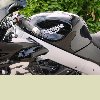 |
It's a personality thing. A hyper active ADHD kid that lives on coffee and sugar is always going to be much happier on a 14,000 rpm 600cc I-4 but I'm always going to prefer a Buell M2. Nobody's right and nobody's wrong. It's just what it is. | |||||||||||||||||||||||||||
M1combat  |
For a real street bike... I think you want a torque monster. An 88" Buell tuned to make max HP from 3K to 7K. It would be nice to have a six speed that would fit in an XB... | |||||||||||||||||||||||||||
Lornce 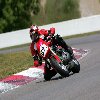 |
Interesting discussion, gentlemen. Thanks for your efforts, it's illuminating. As I understand it, torque is a term that gets misused a LOT by gearheads. What they're really referring to (whether they realize it or not), as has been mentioned, is low rpm horsepower. The current popularity of large displacement cruisers and the subsequent talk re. big shove torque, are really seat of the pants impressions of the effects of large amounts of low speed horsepower. Which of course is dependent upon torque, but it's horsepower that's realized. Have I got that right? Again, thanks all for your learned discourse. Lornce |